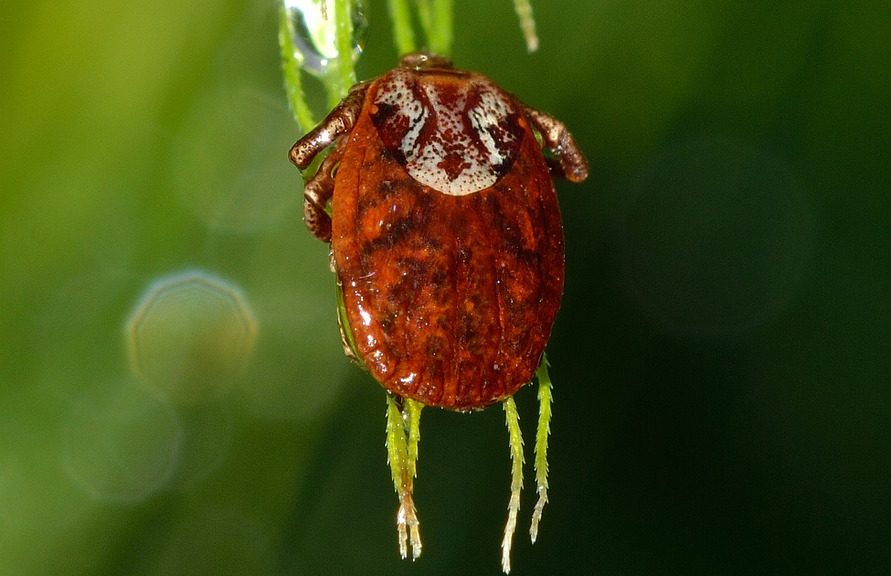
How to Keep the Ticks Away
I’m a field biologist, and, if you couldn’t already tell, I’m pretty passionate about the outdoors. So it goes without saying that I’m outside for work, I’m outside for leisure, I pretty much live out there. And I love it. But one thing I do NOT love is the many varieties of blood-sucking insects, particularly ticks.
Ticks are probably my least favorite thing of all time. Not only are they gross, sneaky and annoying, but they can also carry with them dangerous, infectious diseases. So if like me, you spend any sort of time in the natural world among the vegetation it’s important to know how to keep the ticks away.
What are ticks and what are they playing at?
Ticks are arachnids. Yes, like spiders. The type of tick you may encounter varies by location, as there are several species, but they are all ectoparasites. They survive by feeding on the blood of other animals, including humans. Ticks will hang out on vegetation with their arms in the air waiting for something to walk by that they can grab on to. Ticks are a bit more invasive than other blood-sucking arthropods like mosquitoes, due to the fact that they embed their entire head within the host in order to feed.
This is, needless to say, hardly pleasant at all. Ticks get in your personal bubble and take your blood without permission but this wouldn’t be such a huge deal if not for the diseases they may carry and can transfer to you as they feast on your blood.
Tick-Borne Diseases
Yes, it’s a gross topic, but it’s important to understand what you’re dealing with. Hopefully, this will inspire you to take preventative measures against tick bites.
Not all ticks carry diseases, but disease-carrying ticks can be found pretty-well anywhere in the US.
If you live in the Northeastern or Midwest United States, you may be all too familiar with ticks and the illnesses they carry, particularly Lyme disease. Lyme is much more common in the East than the West but there have been confirmed Lyme carrying ticks in the West as well. Other diseases include rocky mountain spotted fever, anaplasmosis, tick-borne relapsing fever, and even red meat allergy. You can find specific information on tick-borne illnesses and their symptoms here.
Some of these diseases can be life-threatening. Many can be treated with antibiotics. But some, like Lyme disease, can cause health problems for the rest of your life if they aren’t caught and treated fast enough. Unfortunately, Lyme can also be quite difficult to diagnose.
So, friends, the best medicine is prevention!
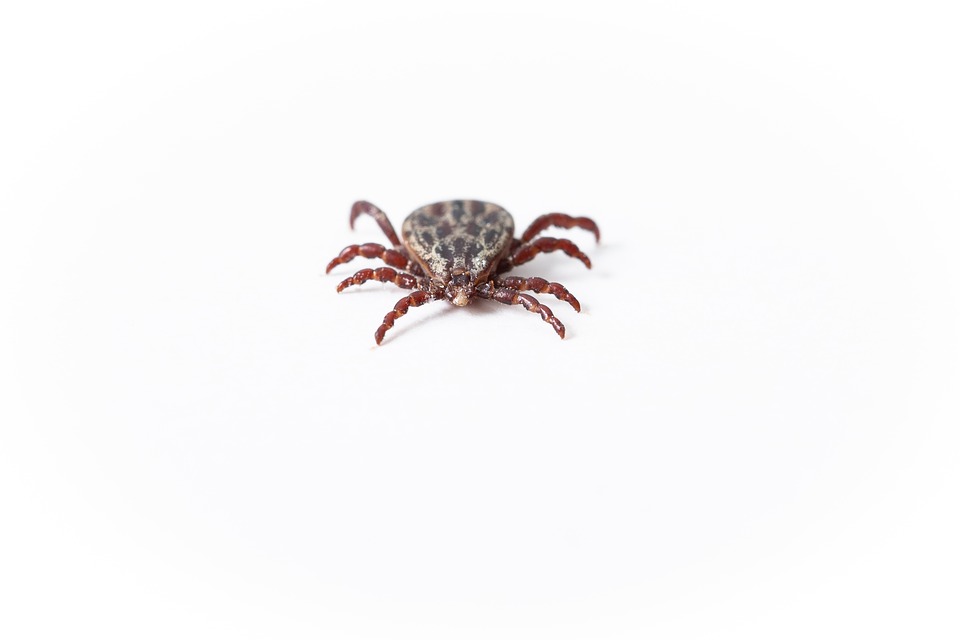
Clothing
Clothing is your most basic line of defense against ticks. The more skin you can cover with clothes, the lower the chance a tick has of breaking through.
If you know you’ll be walking through thick brush, wearing pants long enough to cover your ankles, is an excellent idea. Sometimes, if the ticks are out in force, I’ll even tuck my pant legs into my socks cutting off the entrance to my legs completely.
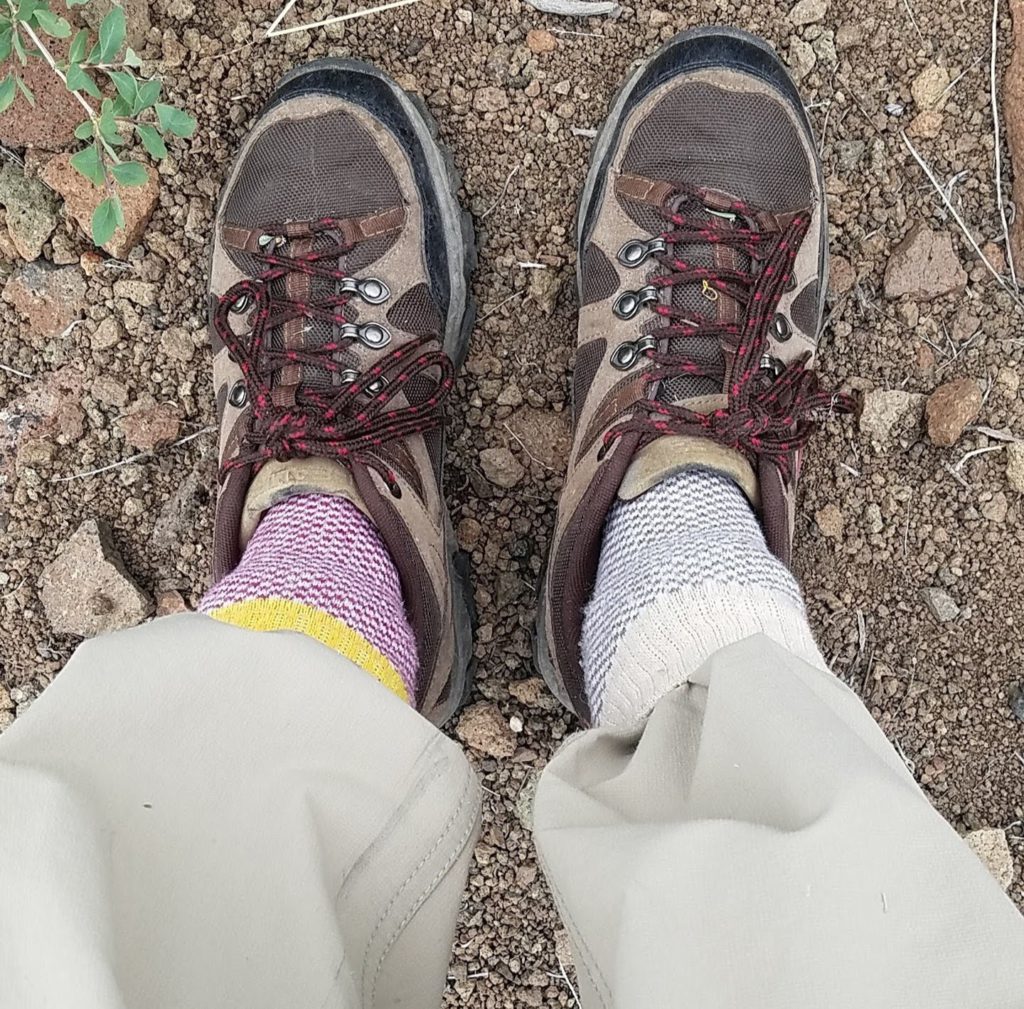
Stylin, I know.
Tick Check
If you are in an area where ticks can be found it’s very important to check yourself for ticks. Ticks can even be found in the backyard, the park, or be carried to an area near you by an animal. Ticks are very small and very sneaky. You can’t usually feel them crawling on you and you can’t feel it when they start to chow down because they excrete small amounts of anesthetic as they bite.
Ticks will often hide in sheltered areas on the body like armpits, under your waistband, in your hair or in other unmentionable places on your person, so it’s important to check everywhere after you have been in an area with a high tick concentration.
They’re sneaky little buggers and they may manage to avoid detection despite your best efforts. I have found ticks on me after a thorough tick check, a shower, and a good nights sleep only to wake up and find the little monsters crawling over my skin like they own the place. So you may want to bring out the big guns that say, “hey tick, you really don’t want to stick around or it could get pretty unpleasant for you, pretty fast.” Read about these “big guns” in the next section.
Repellent of course
I tend to avoid DEET because I hate it. And smearing paint-stripping chemicals on my porous skin scares me almost as much as contracting Lyme disease. If you’re cool with DEET than use it, the prevailing consensus by health professionals is that deet, below a certain concentration, is safe to use on the skin, I just don’t like it. But SURPRISE, DEET isn’t the only insect-repelling chemical out there, nor is it the most effective. (Here’s a rather dense article about the potential hazards of DEET if you’re interested)
My favorite insect repellents are permethrin and picaridin.
Permethrin
Permethrin is a chemical that I discovered far too late in life, and I could have avoided so many close calls had I known about it before-hand.
Unlike the repellents you may be used to, permethrin is sprayed on the clothes and not the skin. This comes with several advantages. Permethrin lasts up to six weeks. It is odorless when dry. You can use it to treat things beyond your clothing such as backpacks, tents, camp chairs, etc. It doesn’t stain or remove the color from clothing. And, incidentally, it’s safe to use on dogs (but NOT cats) and can even keep the bugs away from fido for six weeks with just one treatment!
It’s pretty amazing stuff. I treat all my field clothes with it because I head into the Tick-Zone on the daily, and let me tell you, it works wonders! Since I began using permethrin on my clothes, the amount of ticks I find crawling on my person has decreased dramatically. The difference has been something like 2 ticks crawling on me the entire summer field season with permethrin-treated clothes vs. 2 ticks crawling on me every day without the permethrin.
Unlike DEET, permethrin actually kills ticks instead of merely repelling them. So, if you’re worried about them lying in wait on your discarded clothing, you can treat a laundry bag with permethrin and place your suspected clothing inside it overnight. That should take care of any stragglers you might miss during your tick checks.
Permethrin also keeps mosquitoes and other biting insects away, as an added bonus. I use the Sawyer brand of permethrin and it has worked wonderfully for me.
Picaridin
Permethrin is often sufficient for me when I’m in the field. But if I’m having an unusually buggy day, I also use picaridin. Picaridin is a pleasant, citrus-smelling, lotion that you rub on your skin and, when paired with permethrin, it’s practically bulletproof. It doesn’t make me feel oily and gross like DEET based repellents. The only downside is that it’s more expensive than DEET.
Be sure to follow the recommendations on both repellents to ensure that you use enough to protect you. If you skimp on the repellent the bugs will be able to get through your shield.
There are a number of other things you can do that will help keep the nasty buggers away including all-natural substances that repel bugs and even simple behavior changes that will help discourage things from sucking your blood. I’ve detailed these methods in a previous article. Click here to read it.
How to get a tick out after it is embedded
So what if you do get a tick? Don’t panic guys, it happens. If you live somewhere with a lot of ticks and/or spend a lot of time outdoors it’s even likely to happen to you multiple times.
There are a lot of old wives tales about the best way to extract a tick from your skin. These tales include things like pouring rubbing alcohol on the tick or touching a warm, recently lit matchstick to the tick. Supposedly these things make the tick want to pull out of you on its own. You may have heard similar advice before, but DON’T follow it.
Most of these methods, in fact, can cause the tick to regurgitate its stomach contents back into your body which increases the likelihood of it transferring all those unwanted diseases that we talked about earlier to you.
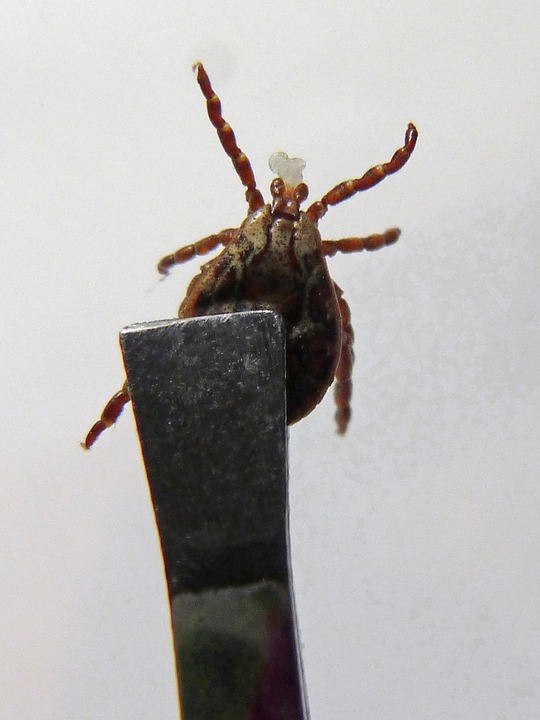
Instead, get a pair of tweezers, grab the tick as close to the skin as possible and then pull straight out firmly but not too quickly. You want the entire tick, head and all, to come out. I don’t know about you, but I’m not too keen on having a tick head stuck in my body. However, if the head does break off and stay lodged in the skin, many people advise that this is not too big of a problem and the risk of infection from a broken off tick head is low.
You may want to put the tick in a plastic bag and keep it in your freezer for a few days. That way, if you begin to experience any symptoms of possible tick-borne illnesses, you can have the tick tested to see if it is the cause of your symptoms.
Don’t let them scare you away from the things you love
Armed with your knowledge of defensive measures against ticks and what to do if a tick does manage to breach your hull, you should feel capable of getting back out there and doing what you love whether it be gardening, hiking, or ultimate frisbee.
Don’t let the tiny unpleasant bits keep you from living your outdoor life to the fullest!
Do you live somewhere with lots of ticks? What methods do you use to keep them out of your life? Leave your answers, comments, and questions below! We love to hear from you.
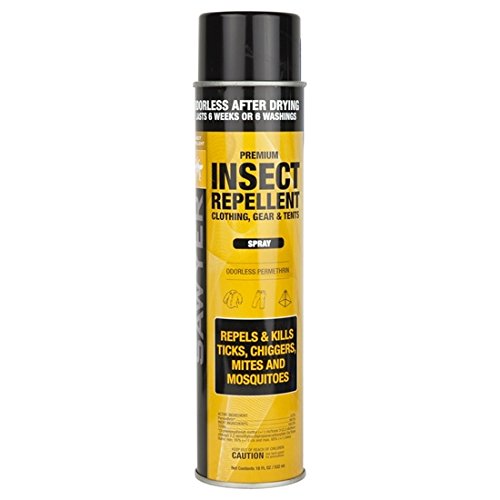
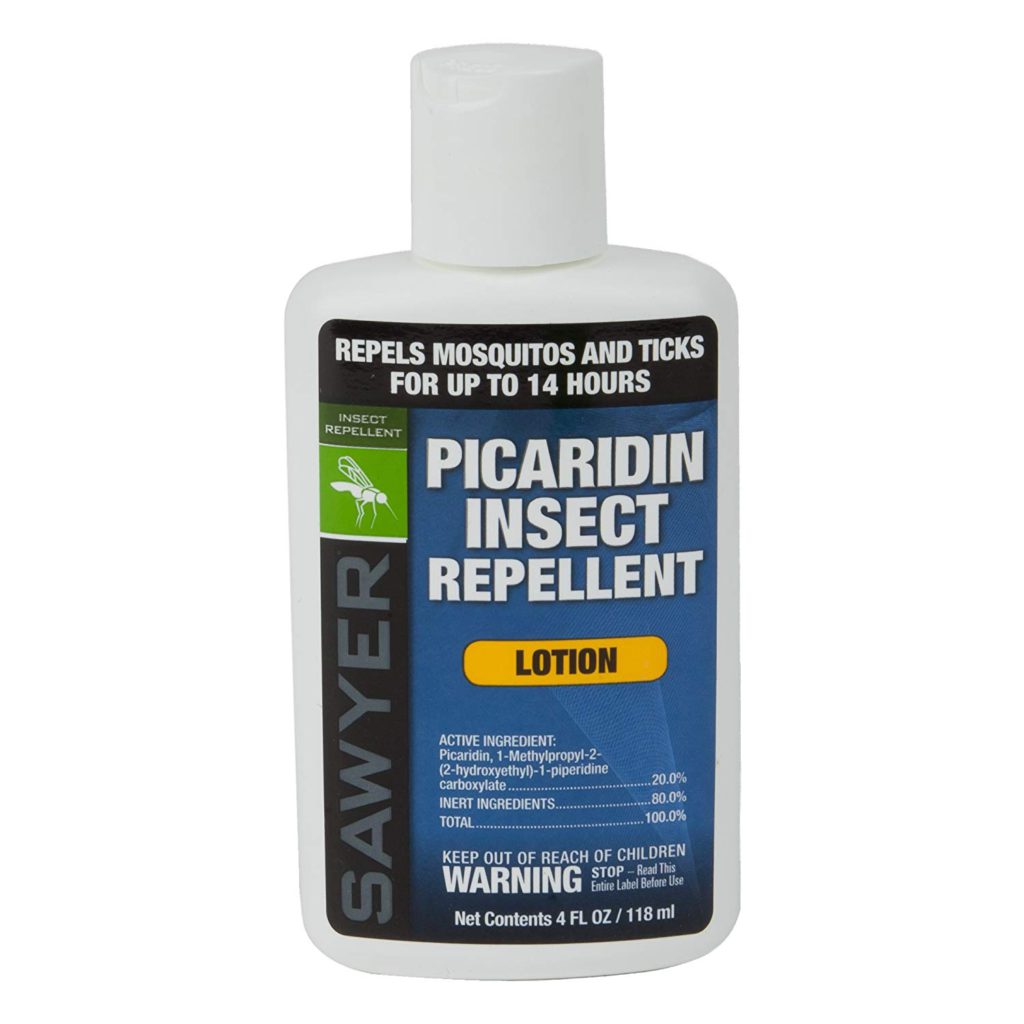
8 thoughts on “How to Keep the Ticks Away”
I’m a outdoor lover, sometimes go out with my dog, just want to know can I use those two recommended repellent on my dog?
Permethrin is safe to use on dogs. Make sure to follow the specific instructions for application on dogs. Click this link to read them.
Thank you so much, I’m really glad I came across this. I live in New England and I’m constantly worried about Lyme disease. I have sometimes wondered how far away the ticks stay from someone using a DEET-based spray and would get a knot in my stomach thinking about the fact that they could hang out in a backpack or something else not directly sprayed with repellent.
The permethrin-picaridin combo definitely is the way I’ll be going from now on. It’s way more reassuring to know that even if a tick does come home with us, the permethrin will kill it anyway. And so awesome that it’s odorless, so you can spray a tent, backpack, car seat, etc.
Thanks again
Those two chemicals have certainly changed my experience in the field since I began using them. I hope they work well for you too!
I will take the extraction process into consideration next time I have a tick embedded in me. Last time however, I used Vaseline to get it out. Is that the wrong way to go about it?
Any method other than the one I explained in the post is generally not recommended. Using chemicals like vaseline or other things that can cause discomfort to the tick increase the risk that it will regurgitate its stomach contents, along with any diseases it may be carrying, into your body. I personally would rather not take that risk.
Great article. Whether I’m out with hunting, hiking, or camping I tend to attract ticks like its my job.
I appreciate the information regarding other ways to repel ticks rather than DEET. I agree with you I’m not a fan of it and prefer to stay away from it.
Thanks for the info!
Give the two repellents I suggested a try and it will change your life! 🙂